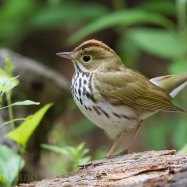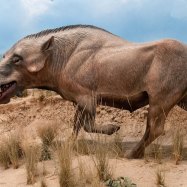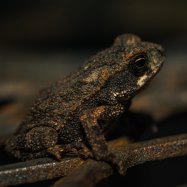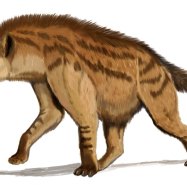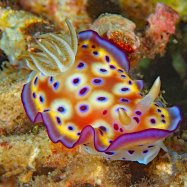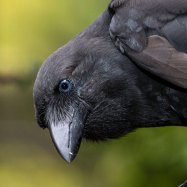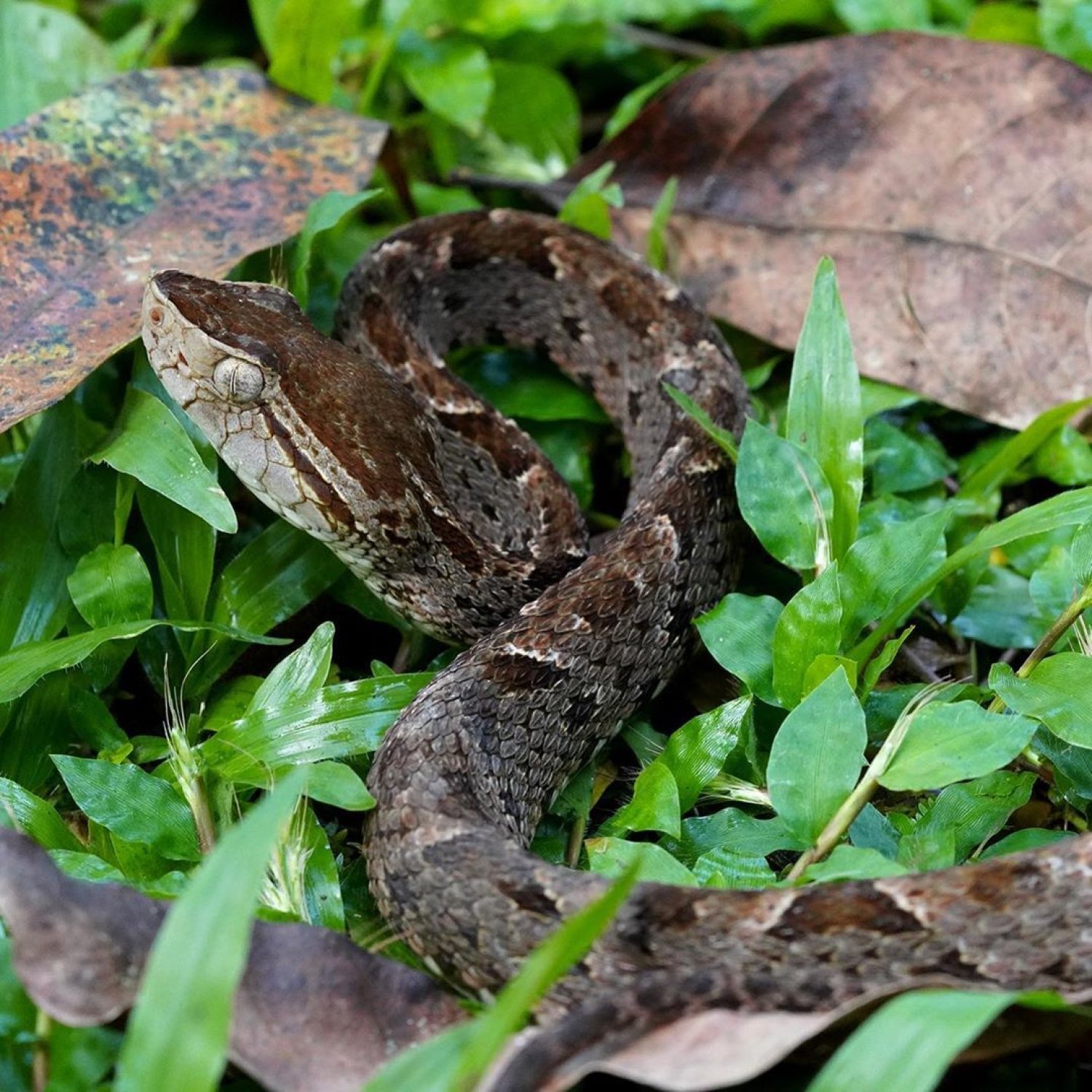
Fer De Lance Snake
Up to 7 feet (2.1 meters)
The Fer De Lance Snake, also known as the ultimate pit viper, can reach up to 7 feet in length and is found in the Lowlands near rivers and streams. With its thick and robust body, this member of the Viperidae family is a formidable predator. Its venom can cause serious health issues, so it's best to admire this beautiful but dangerous creature from a safe distance. #FerDeLance #Snake #Viperidae
Animal Details Summary:
Common Name: Fer De Lance Snake
Kingdom: Animalia
Habitat: Rainforests, tropical forests
The Fer De Lance Snake: Deadly Predator of the Rainforests
Deep in the dense, lush rainforests of Central and South America lurks a silent, deadly predator - the Fer De Lance snake. With its scientific name, Bothrops atrox, meaning "fierce viper", and its common name meaning "spearhead" in French, this snake is not one to be taken lightly. In this article, we will explore the fascinating world of the Fer De Lance snake, from its habitat to its hunting methods, and understand why it is considered one of the most dangerous snakes in the world.Classified under the Animalia kingdom, the Fer De Lance snake belongs to the phylum Chordata and the class Reptilia, alongside other snake species Fer De Lance Snake. Its order, Squamata, refers to its scaly skin, and its family, Viperidae, includes other venomous snakes such as the rattlesnakes and copperheads. The Fer De Lance snake can be found in a variety of habitats, including rainforests and tropical forests, and has a wide geographical distribution across several countries, including Colombia, Venezuela, Brazil, Peru, and Ecuador.
Habitat and Habitat Requirements
The Fer De Lance snake is well adapted to its environment, with its thick and robust body shape being perfect for navigating through the dense vegetation of the rainforests. They are most commonly found near rivers and streams in lowland areas, where they can find ample prey and water sources. These snakes are also known to hide in tree hollows and burrows, making them difficult to spot and increasing their threat level to humans.These snakes have specific habitat requirements that are essential for their survival. They prefer to live in humid, warm climates, making the tropical rainforests of Central and South America the ideal home for them. The abundance of prey, such as rodents, birds, and other small animals, in these areas also plays a crucial role in their habitat selection.
Physical Appearance and Behavior
One of the most striking features of the Fer De Lance snake is its coloration Fruit Fly. Their body color ranges from light brown to dark brown, with distinct darker markings along their body. This coloration serves as camouflage against the forest floor, allowing these snakes to blend in seamlessly with their surroundings. Their pattern, resembling a spearhead, gives them their common name.These snakes can grow up to 7 feet (2.1 meters) in length, making them one of the largest venomous snakes in the region. They have a triangular-shaped head and sharp, hollow fangs, perfectly designed for injecting their deadly venom into their prey. These snakes are also incredibly fast and agile, able to strike at lightning speed and inflict serious harm on their victims.
Diet and Feeding Method
The Fer De Lance snake is a carnivorous species, meaning that it feeds solely on other animals. These snakes have a broad diet, including rodents, lizards, birds, and even other snakes. They are also known to be opportunistic feeders, meaning they will eat whatever prey is available to them.Their hunting strategy is simple yet effective. These snakes utilize a sit-and-wait approach, where they lay motionless, hidden in the underbrush, waiting for unsuspecting prey to pass by. Once the prey is within striking distance, the Fer De Lance snake will attack, using its venom to immobilize and kill its victim. This efficient hunting technique, combined with their deadly venom, makes the Fer De Lance snake a formidable predator in the rainforest ecosystem.
The Venom of the Fer De Lance Snake
Speaking of venom, the Fer De Lance snake possesses one of the deadliest venoms of any snake in the world. Their venom is a complex cocktail of enzymes and proteins that can cause severe damage to living tissue, leading to paralysis and even death in some cases. In fact, the Fer De Lance is responsible for the majority of snakebite-related deaths in its range, making it one of the most dangerous snakes to encounter in the wild.The venom of the Fer De Lance snake also varies in composition and potency, depending on the location and the individual snake. This makes it difficult for medical professionals to treat bites from this snake, as different variants of the venom may require different antidotes. Interestingly, research has shown that the venom of these snakes varies in potency depending on their habitat, with snakes living in higher elevations having more potent venom compared to those living in lowland areas.
Adaptations for Survival
Over thousands of years, the Fer De Lance snake has evolved to be a highly successful and efficient predator. Its coloration and behavior make it perfectly adapted to blend in with its environment, making it difficult for both prey and predators to spot it. Its powerful fangs and venom allow it to take down prey much larger than itself, ensuring its survival in a competitive ecosystem.But perhaps one of the most fascinating adaptations of the Fer De Lance snake is its ability to regulate the amount of venom it injects into its prey. Studies have shown that these snakes can adjust the amount of venom injected depending on the size of their prey, ensuring that they do not waste their limited venom on small or non-essential prey.
Conservation Status
Unfortunately, like many other species that call the rainforests home, the Fer De Lance snake is facing threats to its survival. Habitat loss due to deforestation and human encroachment is a significant factor affecting the population of these snakes. They are also often hunted and killed out of fear or for commercial purposes, such as for their skin and meat.Several conservation efforts are in place to protect the Fer De Lance snake, including education and awareness programs to help reduce conflict between humans and these snakes. Captive breeding programs have also been established to help protect the genetic diversity of these snakes and prevent inbreeding.
Conclusion
In conclusion, the Fer De Lance snake is a fascinating and deadly predator found in the rainforests of Central and South America. With its superb adaptations for survival, including coloration, venom, and hunting techniques, it is not surprising that this snake is feared by both prey and predators alike. As humans continue to encroach on their habitat, it is essential to understand and respect the role of the Fer De Lance snake in the delicate balance of the rainforest ecosystem.

Fer De Lance Snake
Animal Details Fer De Lance Snake - Scientific Name: Bothrops atrox
- Category: Animals F
- Scientific Name: Bothrops atrox
- Common Name: Fer De Lance Snake
- Kingdom: Animalia
- Phylum: Chordata
- Class: Reptilia
- Order: Squamata
- Family: Viperidae
- Habitat: Rainforests, tropical forests
- Feeding Method: Carnivorous
- Geographical Distribution: Central and South America
- Country of Origin: Colombia, Venezuela, Brazil, Peru, Ecuador, and other countries
- Location: Lowlands, near rivers and streams
- Animal Coloration: Light brown to dark brown with darker markings
- Body Shape: Thick and robust
- Length: Up to 7 feet (2.1 meters)
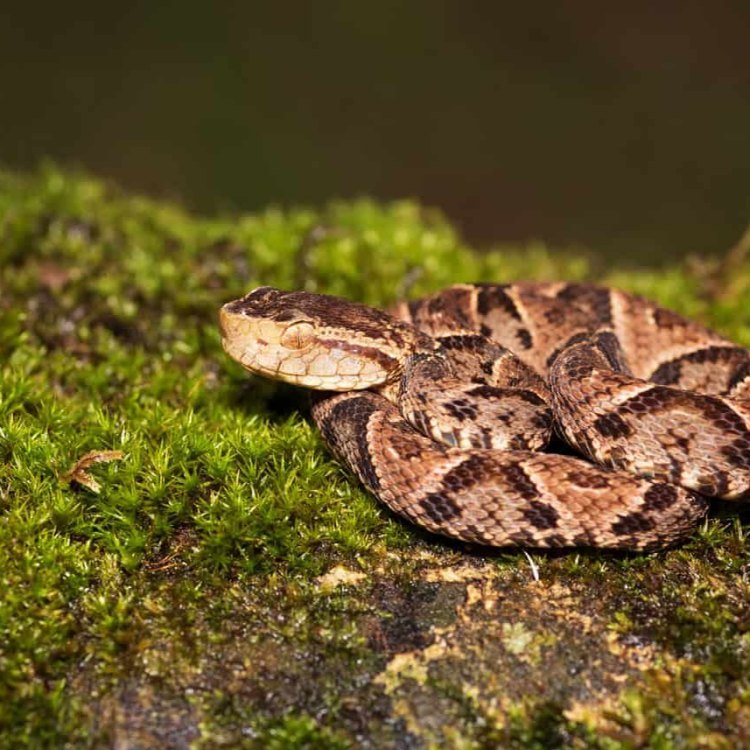
Fer De Lance Snake
- Adult Size: Large
- Average Lifespan: 10-20 years
- Reproduction: Oviparous (lays eggs)
- Reproductive Behavior: Mating season occurs during the rainy season
- Sound or Call: Rattlesnake-like rattle sound when threatened
- Migration Pattern: Non-migratory
- Social Groups: Solitary
- Behavior: Nocturnal, ambushes prey
- Threats: Habitat loss, human persecution, snakebite
- Conservation Status: Least Concern
- Impact on Ecosystem: Plays a role as a predator, helps control rodent populations
- Human Use: Some are kept in captivity for educational purposes
- Distinctive Features: Triangular-shaped head, long fangs
- Interesting Facts: Fer De Lance snake is responsible for the highest number of snakebite incidents in Central and South America.
- Predator: Birds of prey, large mammals
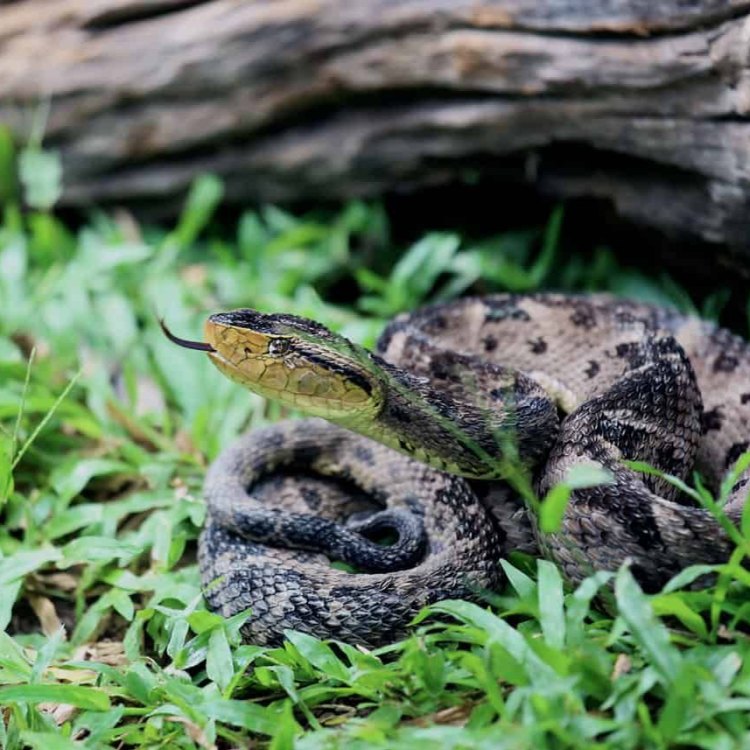
Bothrops atrox
The Fer De Lance Snake: More than Just a Deadly Predator
The thick jungle rainforest is known for its array of exotic creatures, some of which can be quite intimidating. One of the most feared inhabitants of this dense ecosystem is the ferocious Fer De Lance snake. Its reputation for being a highly venomous and aggressive snake has sparked fear in the hearts of many. However, there's more to this incredible creature than meets the eye PeaceOfAnimals.Com.In this article, we will delve into the unique features and behaviors of the Fer De Lance snake, debunking common misconceptions and shedding light on its significance in the delicate ecosystem it calls home.
Adult Size, Average Lifespan, and Reproduction
The Fer De Lance snake, also known as the Terciopelo or the Bothrops asper, is a large snake found in Central and South America. It can grow up to an average length of 5-7 feet (1.5-2 meters), with some individuals reaching up to 8 feet (2.5 meters). It is the largest species of the Bothrops genus and is often mistaken for the highly venomous and closely related Fer-de-lance pit viper.
On average, the Fer De Lance snake can live for 10-20 years in the wild, although they have been known to live up to 27 years in captivity. Their lifespan is dependent on various factors such as availability of prey, habitat, and potential threats.
Unlike some other snake species, the Fer De Lance snake is oviparous, meaning it lays eggs for reproduction Falcon. Females typically lay a clutch of 24-45 eggs during the rainy season, which takes place between September and October. This timing is crucial, as it coincides with the mating season, allowing for the highest chances of successful reproduction.
Reproductive Behavior and Sound or Call
During the mating season, which occurs during the rainy season, male Fer De Lance snakes engage in intense combat over females. They stand upright, facing each other, and wrestle by intertwining their bodies and pushing each other to the ground. This behavior is known as the "dance of the adders" and can sometimes last for hours.
Once a male snake has successfully won over a female, they go through a process known as "cloacal apposition," where they entwine their tails to align their reproductive organs. This process can take several hours and is crucial for the successful fertilization of the female's eggs.
One common misconception about the Fer De Lance snake is that it makes a rattlesnake-like rattle sound when threatened. This is not the case, although it may coil up and shake its tail in dry leaves or branches to produce a similar sound. Instead, its warning sign is a loud hiss followed by a series of rapid head jerks. This behavior is commonly seen when the snake feels threatened or is defending its territory.
Migration Pattern and Social Groups
Unlike other snake species that migrate to different areas in search of food or breeding opportunities, the Fer De Lance snake is non-migratory. It stays in its designated home range, which can vary from 0.5-10 hectares, depending on the availability of resources.
This snake is solitary and is rarely seen in groups unless during the mating season. It prefers to have its own space and will only come in contact with other individuals for reproductive purposes.
Behavior and Threats
The Fer De Lance snake is primarily nocturnal, spending most of its time resting under logs or fallen branches during the day. It is an ambush predator, waiting for unsuspecting prey to stumble upon its path. It has excellent camouflage, blending seamlessly into its surroundings, making it challenging to spot.
Although it is known for its venomous bite, this snake is not naturally aggressive towards humans. In most cases, snakebites occur when humans accidentally step on or disturb the snake, causing it to feel threatened and defend itself. According to the World Health Organization, the Fer De Lance snake is responsible for the highest number of snakebite incidents in Central and South America, making it a crucial contributor to snake-related deaths in the region.
The biggest threat to the survival of the Fer De Lance snake is habitat loss. With the rapid destruction of rainforests for agricultural development and human settlements, these snakes are losing their natural homes. Moreover, they are often killed out of fear or in retaliation for causing harm to livestock. This human persecution further adds to the decline of their population.
Conservation Status and Impact on Ecosystem
Despite the threats it faces, the Fer De Lance snake is listed as "Least Concern" on the International Union for Conservation of Nature (IUCN) Red List. This classification is due to its wide distribution and relatively stable population size.
In addition to being a top predator, the Fer De Lance snake also plays a crucial role in controlling rodent populations in the rainforest. By preying on rodents, it helps maintain a balance in the ecosystem, preventing outbreaks of rodent-borne diseases.
Human Use and Distinctive Features
While the Fer De Lance snake may be a feared predator in the wild, its venom is also highly valued for its medicinal properties. In South and Central America, it is known as "Yarara" and is used in traditional medicine to treat various ailments such as high blood pressure and fever.
Moreover, some Fer De Lance snakes are kept in captivity in zoos and educational facilities for people to learn about their importance in the ecosystem and how to safely interact with them.
One of the most distinctive features of the Fer De Lance snake is its triangular-shaped head, which is wider than its body. This feature, along with its long fangs, makes it easily recognizable and distinguishes it from other snake species.
Interesting Facts and Predators
Fer De Lance snakes are known to be opportunistic hunters, preying on a wide variety of animals such as birds, small mammals, lizards, and even other snakes. However, they are not invincible and have their share of predators. Large birds of prey such as hawks, eagles, and owls, as well as large mammals like jaguars and ocelots, pose a threat to these snakes.
One of the most interesting and somewhat alarming facts about the Fer De Lance snake is its involvement in human deaths. Its highly venomous bite is responsible for numerous deaths in Central and South America each year, making it a feared and dangerous creature.
The Role of the Fer De Lance Snake in the Ecosystem
While the Fer De Lance snake may have a negative reputation due to its venomous bite, it is an essential and valuable part of the diverse rainforest ecosystem. Its role in controlling rodent populations and maintaining a balance in the food chain cannot be overlooked.
Moreover, with proper education and conservation efforts, the human population can coexist peacefully with this misunderstood creature, ensuring its survival for many years to come.
Conclusion
The Fer De Lance snake, with its unique features and behaviors, is a fascinating and integral part of the rainforest ecosystem. Its survival is crucial not only for the maintenance of a healthy ecosystem but also for traditional medicine practices and educational purposes. With proper conservation efforts and a better understanding of its importance, we can coexist safely with this magnificent creature, respecting its space and role in the delicate web of life.
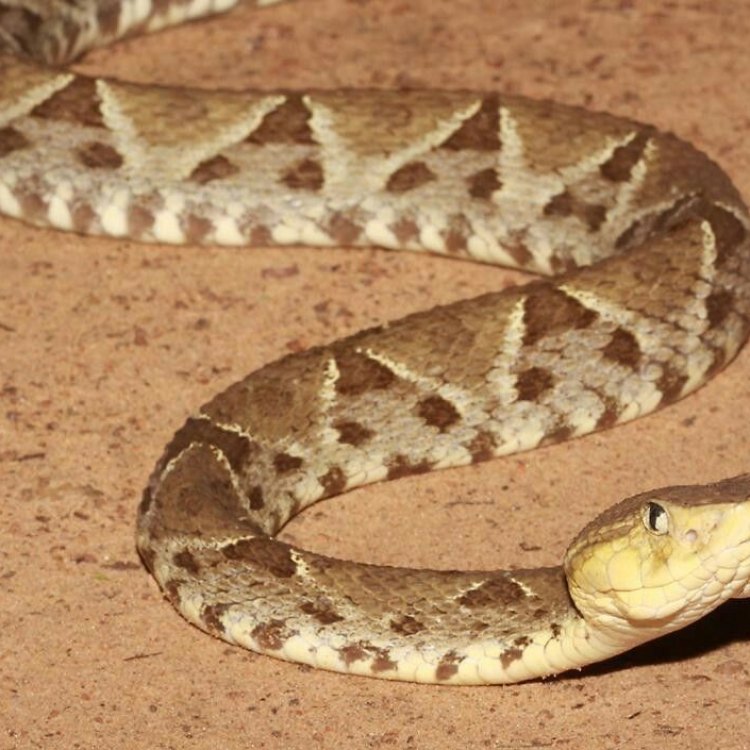
The Fer De Lance Snake: Deadly Predator of the Rainforests
Disclaimer: The content provided is for informational purposes only. We cannot guarantee the accuracy of the information on this page 100%. All information provided here may change without prior notice.


